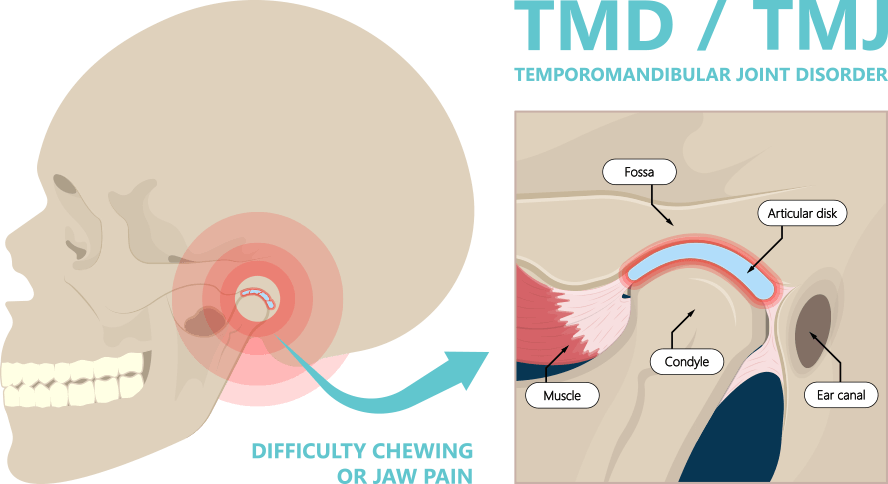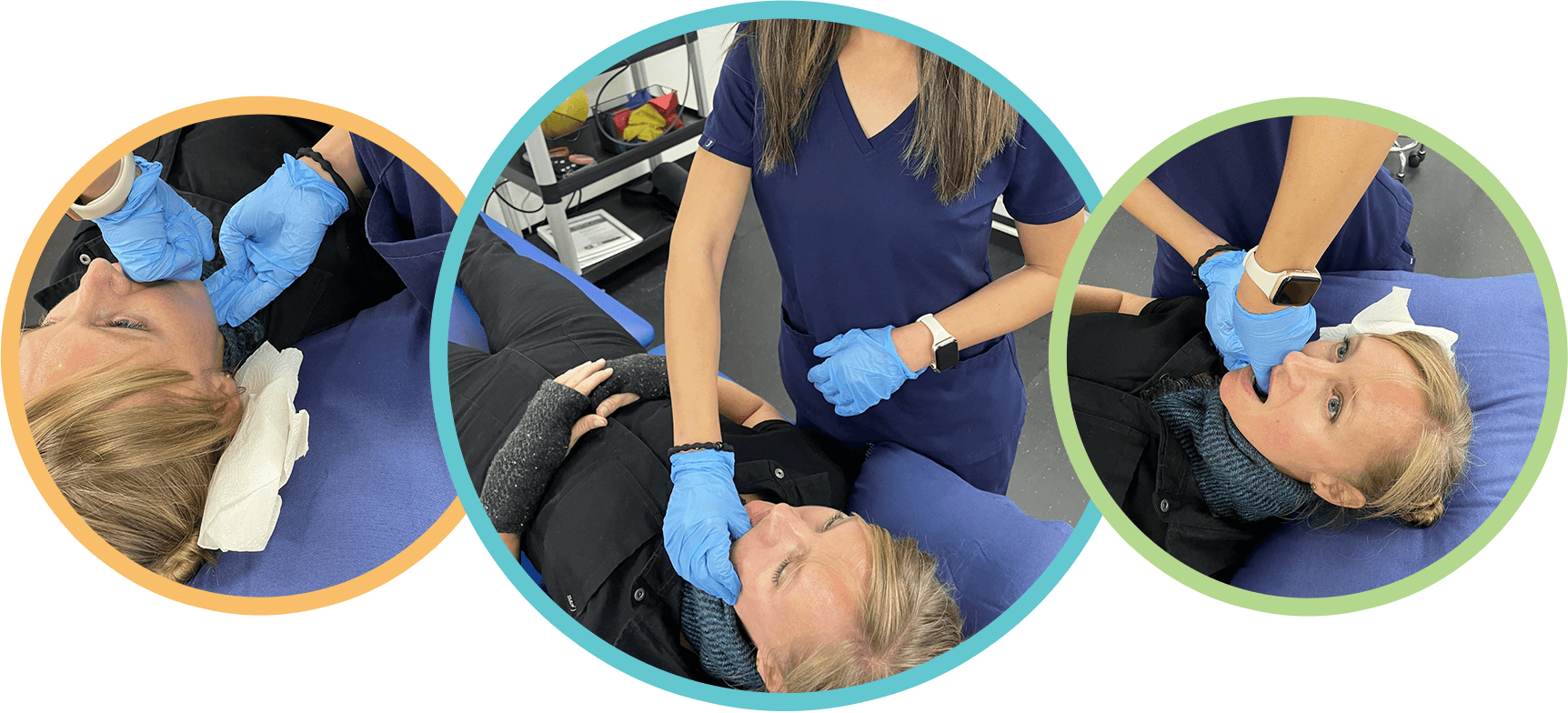TEMPEROMANDIBULAR JOINT PHYSICAL THERAPY
What Is Temporomandibular Joint Disorder?
The temporomandibular joint, or TMJ, is a hinge joint. It is located in front of your ear and connects your jaw to your skull. The TMJ functions to open and close the mouth and move the jaw from side to side and front to back. It allows you to chew, swallow, and talk. TMD occurs when the natural function of the TMJ is altered or limited due to disturbance of the joint itself or the ligaments or muscles in the head, neck, and face area.

Causes of TMD
Trauma
Examples of trauma include: a lengthy dental procedure, motor vehicle accident, or blow to the face and jaw.
Chronic jaw clenching or grinding (bruxism)
Many people clench their jaws or grind their teeth during sleep. This is an involuntary behavior (done without thinking).
Poor posture habits
A forward-head posture during activities, such as sitting, standing, cooking, and computer or cell phone use, may lead to tightness in the jaw and neck muscles. This can result in TMD.
Abnormal teeth alignment (malocclusion)
This may affect the normal function of the TMJ due to an inadequate chewing pattern.
Jaw fracture
A broken jaw due to an accident or surgery will affect the function of TMJ.
Surgery
Pain, stiffness, and limited mouth opening after jaw or facial surgery may lead to TMD. A physical therapist skilled in treating people with TMD can help you restore proper jaw movement after surgery to the face, mouth, or jaw.
Trismus (lockjaw)
A muscle spasm of the jaw after a lengthy dental procedure will limit your ability to open your mouth.
Displacement of the disc or soft-tissue cushion located between the ball and socket of the TMJ
This condition causes popping or clicking of the jaw and often leads to pain, and limits your ability to open your mouth.
Symptoms of TMD
TMD can be temporary or last for years. People with TMD may experience:
- Jaw pain (the most common symptom).
- Difficulty opening the mouth fully.
- Shifting of the lower jaw to one side at the end of mouth opening. The jaw also may move from side to side during opening.
- Pain with chewing certain foods.
- Noises in the jaw (crackling or popping) with chewing or talking.
- Headaches.
- Neck or facial pain.
- Dizziness.
- Earache, stuffy ear, or ringing in the ear.
- Jaw fatigue.
- Lockjaw. The jaw gets stuck in a partly open position.
- Difficulty swallowing.
- Problems with speaking.
- Anxiety or a sense of helplessness.
How Can a Physical Therapist Help?
Your physical therapist can help you decrease your pain and restore jaw function. They will design a treatment program for your specific condition. Your physical therapy program may include:

Education
Your physical therapist will discuss the cause of your TMD and educate you about:
- Proper posture and body mechanics.
- Tongue resting position.
- Eating a soft diet when appropriate.
- Exercise.
- A self-management routine.
Patient education aims to reduce your discomfort and prevent future aggravation and symptoms.
Joint mobilization
Your physical therapist will address any stiffness in your neck and jaw to help restore movement of your TMJ.
Modalities
Your physical therapist will determine which treatments are best for you. These may include using treatments such as heat or ice, ultrasound, electrical stimulation, light therapy, or other tools to prepare your soft-tissue for manual (hands-on) therapy.
Stress management
Your physical therapist can teach you ways to help you manage stress and offer psychological support and positive encouragement. If needed, they will refer you to a psychologist or other appropriate health care provider.
Soft-tissue release
Your physical therapist may use hands-on treatments to mobilize your soft-tissue. This can address muscle spasms and tightness. They may work on your face and jaw and inside your mouth.
Therapeutic exercises
Your physical therapist will teach you specific exercises to repeat several times throughout the day. Doing them can help you break the cycle of pain and spasm. These exercises will help address imbalances in the involved muscles and improve joint mobility to support and keep proper alignment of your head, neck, and jaw.
- Kendall Park
- Edison
- Princeton
- Old Bridge
- Monroe

